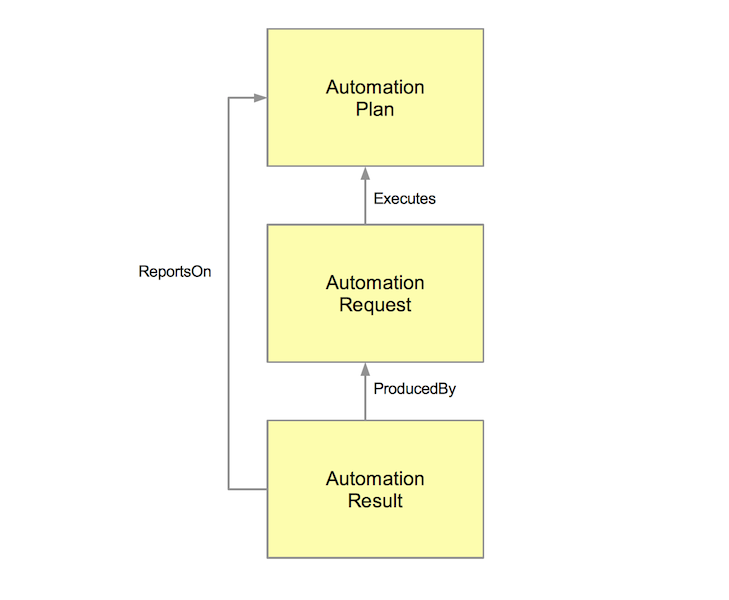Automation Resource Definitions
The Automation resource properties are not limited to the ones defined in this specification; service providers may provide additional properties. It is recommended that any additional properties exist in their own unique namespace and not use the namespaces defined in this specification.
A list of properties is defined for each type of resource. Most of these properties are identified in [[!OSLCCore3]] Any exceptions are noted. Relationship properties refer to other resources. These resources may be in any OSLC domain (including Automation).
The diagram below shows the relationships between Automation Resources.

For all resource types defined in this specification, all required properties (those defined with an occurrence of exactly-one or one-or-many) MUST exist for each resource and must be provided when requested. All other properties are optional, and might not exist on some or any resources; those that do not exist will not be present in the returned representation even if requested, while those that do exist MUST be provided if requested. Providers MAY define additional provider-specific properties; providers SHOULD use their own namespaces for such properties, or use standard Dublin Core or RDF namespaces and properties where appropriate.
If no specific set of properties is requested, all properties are returned - both those defined in this specification as well as any provider-specific ones. See [[!OSLCCore2]] Selective Property Values in OSLC Core Specification.
Consumers of OSLC Automation services should note that some resources may have a very large number of related
resources, and that some resources may be very large and/or expensive to compute. For this reason, consumers are
strongly encouraged to use the oslc.properties parameter to limit the properties returned from a
request to the subset required. See [[!OSLCCore2]] Selective Property Values in OSLC Core Specification.